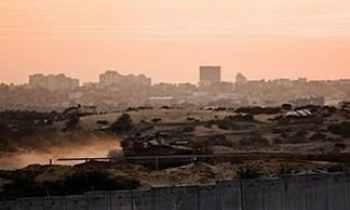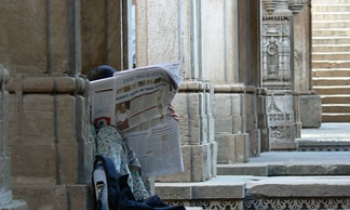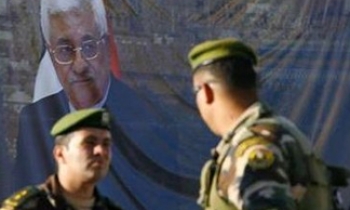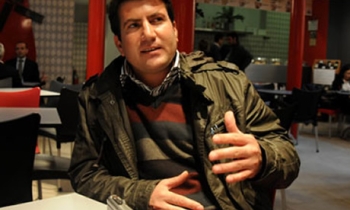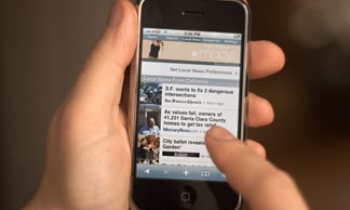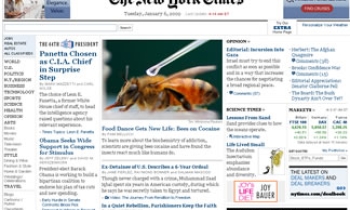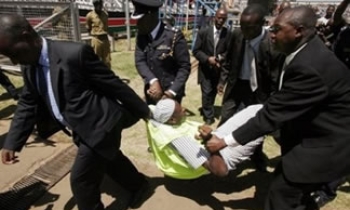Most newspaper stories during the 2o06 Israel-Hezbollah war used Israeli sources more often for quotes and attributions, a new study has found. The overall coverage of the fighting sides (Israel and Hezbollah) was highly critical of both, although Israel received more sympathetic coverage than Hezbollah. An overwhelming majority of articles (55 per cent) explicitly blamed Hezbollah for starting or causing the war.

The findings are from a study conducted by the International Centre for Media and the Public Agenda (ICMPA) at the University of Maryland that looked at the 2006 war between Hezbollah and Israel. The study looked at 14 major English-language newspapers from around the world. It tracked their overall coverage, changes in coverage over time, and ranked them according to authority, depth, source balance, frame balance and empathy. The study report was released on July 30, which coincided with the Qana attack in 2006.
The researchers tracked the first four quotes and attributions in every story. Most stories used Israeli sources more often for those early quotes and attributions (30 per cent on average). Lebanese (not including Hezbollah) sources came in a distant second (18 per cent), and US sources came in third (14 per cent), followed by Hezbollah (6 per cent), UN (6 per cent) and UK (4 per cent) sources. Iranian and Syrian sources were used in fewer than 1 per cent of those first four quotes and attributions.
Slightly over half of the first four quotes were neutral toward Israel, while one quarter were critical and one-fifth were sympathetic. On the other hand, almost 60 per cent of those quotes were neutral toward Hezbollah, while one third were critical and less than 10 per cent were sympathetic.
The overall coverage was highly critical of both, although Israel received more sympathetic coverage than Hezbollah, the researchers found. About 46 per cent of articles were dominated by a critical tone towards Israel, and 51 per cent were predominantly critical of Hezbollah. Almost one-fifth of the coverage was sympathetic to Israel, while barely 6 per cent of the coverage was sympathetic to Hezbollah. Moreover, 36 per cent of articles were neutral towards Israel, while 45 per cent were neutral towards Hezbollah.

Although Lebanon is the home country of Hezbollah, it received mostly sympathetic or neutral coverage. Fifty per cent of the articles about Lebanon were predominantly sympathetic and only 4 per cent were critical.
Among other countries that received substantial coverage and were often linked to the conflict, Iran received the most critical coverage, followed by Syria, the US and the UK. Almost one in every two articles that mentioned Iran was critical of that country, and only 4 per cent were sympathetic. Although 61 per cent of articles were neutral when covering Syria, 36 per cent were critical and only 4 per cent sympathetic. Similarly, 66 per cent were mostly neutral when covering the US, while 27 per cent were critical and only 7 per cent sympathetic. Finally, 71 per cent were neutral in tone towards the UK, while 20 per cent were critical.
The ICMPA researchers also tracked news references to those blamed for starting the war, those portrayed as the victim and those presented as the winner of the war. An overwhelming majority of articles (55 per cent) explicitly blamed Hezbollah for starting or causing the war. Only 11 per cent of the articles blamed Israel, and 9 per cent blamed both sides equally. Interestingly, the rest of the articles blamed Iran (9 per cent), Syria (8 per cent) or the United States (5 per cent). Articles that blamed Hezbollah tended to also blame Iran and Syria, while those that blamed Israel tended to also lay the blame on the US.
Sixtyfive per cent of articles portrayed Israel as the victim in the conflict, while only 13 per cent portrayed Hezbollah (but not Lebanon) that way. Twentytwo per cent presented both sides as victims of a bigger conflict, and those tended to mention the ‘proxy war’ theory between the US, on one side, and Syria and Iran, on the other. Lebanon was treated as a country external to Hezbollah in most articles and was almost always (97 per cent) portrayed as the victim of the war.

Although few articles mentioned anything about who was losing or winning the war, it was interesting to note that more than half of those articles (54%) portrayed Hezbollah as the winner and Israel as the loser, while only 30 percent depicted the opposite. The rest either portrayed both as losers (9%) or both as winners (7%).
When measuring the number of articles and resources dedicated to each of the fighting countries, the researchers found that slightly more stories focused on Israel. When it came to origin of coverage, one-fifth of the articles analysed were reported from Lebanon, and another one-fifth from Israel. About 6 per cent of all articles were dispatched from the Lebanese-Israeli border, where most of the ground battles took place.
When taking the focus of the headlines and leads into consideration, 29 per cent of them focused on Israel, while 26 per cent focused on Lebanon. Another 25 per cent dwelt on both Lebanon and Israel simultaneously. The rest focused on the country of the media outlet. For instance, 15 per cent of headlines and leads published by US media outlets focused on the United States, while 19 per cent of Australian headlines focused on Australia.
Over 33 per cent of articles had an Israel-centered meta-frame dominating them, while 27 percent had a Lebanese- (including Hezbollah) centred meta-frame. Stories with an internationally centred meta-frame accounted for 23 per cent of the coverage. As in the focus of the headlines and leads, each media outlet had substantial amount of coverage focusing on its own country. For instance, over 18 per cent of articles from media outlets from the UK were dominated by a UK-centered meta-frame.
The researchers concluded that the results can be read as evidence that the press generally had balanced coverage of the countries in conflict, with a slight tilt in Israel's favour. However, the Lebanese side received a much bigger proportion of the war's casualties, destruction and loss. Therefore, if one were to expect that greater coverage should be given to the side which suffered greater casualties and destruction, one would find the coverage to lack proportionality, they said.

